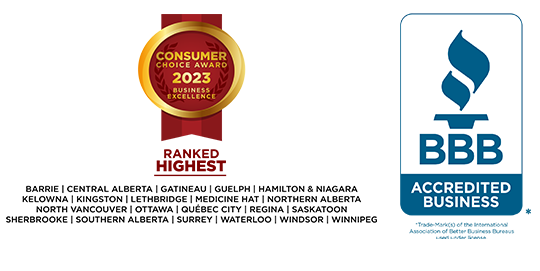What's the income threshold to file a bankruptcy?
Many people are surprised to learn there is no minimum or maximum income threshold to file a Bankruptcy. Individual financial situations are so unique that it’s possible someone earning $10,000 per month is just as eligible to file a Bankruptcy as someone earning $2,000.

So, what does qualify someone to file a Bankruptcy?
If you owe $1,000 or more and are unable to pay your debts as they become due, it is likely you qualify for Bankruptcy. A Licensed Insolvency Trustee would need to review your entire financial situation to determine whether you meet the test for being insolvent (you owe more than the assets you own) — and equally important, whether a Bankruptcy would be your most beneficial option.
How does income affect a Bankruptcy?
The amount of income you earn while in bankruptcy will make a difference in how much the bankruptcy will cost and how long it will last.
The amount you will pay into the Bankruptcy is based on:
- household income,
- household expenses, and
- the number of people residing in the household.
The length of time you will be Bankrupt depends on several factors, including:
- whether it is a first or subsequent Bankruptcy
- whether your income exceeds the legislated income guidelines
- whether you satisfy all your Bankruptcy duties
The income guidelines for bankrupt individuals (i.e. Superintendent’s Standards) are set by the government and specify any surplus income you’re required to pay. Following is a summary of the Superintendent’s Standards for 2020 (monthly) which determine how much — if anything — you will pay into your Bankruptcy.
|
No. of People in Household |
Superintendent’s Standard |
|
1 |
$2,243 |
|
2 |
$2,793 |
|
3 |
$3,433 |
|
4 |
$4,168 |
|
5 |
$4,728 |
|
6 |
$5,332 |
|
7+ |
$5,936 |
To see how these standards would apply in practice, let’s look at two hypothetical Bankruptcy scenarios.
Example 1: First-time bankrupt resulting in surplus income payments
This individual earns a modest income and shares a household with her husband. Because their combined income exceeds the Superintendent’s Standard, she must pay half of her total surplus income into her Bankruptcy for the benefit of her creditors.
|
Bankrupt’s income |
$2,300 |
|
|
Spouse’s income |
$2,000 |
|
|
|
Total household income: |
$4,300 |
|
Superintendent’s Standard for a two-person household |
$2,793 |
|
|
Household surplus income |
$1,507 |
|
|
Bankrupt’s share of household income |
53.49% |
|
|
Bankrupt’s share of surplus income |
$806 |
|
|
|
Surplus income payable (50% of surplus) |
$403 |
|
Bankruptcy duration |
21 months |
|
|
|
Total surplus income payable ($403 x 21) |
$8,463 |
Example 2: Second time bankrupt without a surplus income requirement
This individual earns slightly more than our previous example above but lives alone and has a discretionary expense that reduces his total monthly income. Note that while he earns more than the surplus income threshold, anything less than $100 is not payable into the Bankruptcy.
|
Bankrupt’s income |
$2,700 |
|
|
Non-discretionary expense (child support) |
$300 |
|
|
|
Total household Income: |
$2,400 |
|
Standard for single-person household |
$2,243 |
|
|
Household surplus income |
$157 |
|
|
Bankrupt’s share of household income |
100% |
|
|
Bankrupt’s share of surplus income |
$157 |
|
|
|
Surplus income payable (50% of surplus): |
$0 |
|
Bankruptcy duration |
24 months |
|
How would a raise or reduction in income affect my Bankruptcy?
You are required to submit monthly income reports during your bankruptcy. The Trustee will use the income reports you submit throughout the Bankruptcy to determine whether you’ll need to make surplus income payments, the amount of the payment and your anticipated discharge date. These forms would account for any raises or decreases in income.
It is possible that an increase in income may trigger surplus income requirements — therefore increasing the cost of a Bankruptcy and extending its timeline. If you believe this is foreseeable, we recommend discussing it with a Licensed Insolvency Trustee prior to moving forward with a Bankruptcy. It is also possible that a reduction in income could result in no requirement to pay surplus income and reduce the length of time you remain in bankruptcy. A Licensed Insolvency Trustee will help you ensure Bankruptcy is still the most cost-effective option or if you may prefer to file a Consumer Proposal instead.

